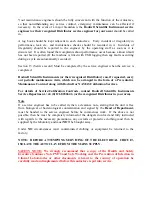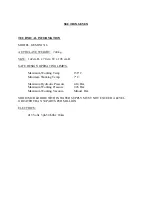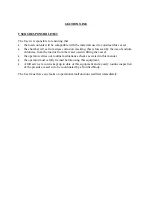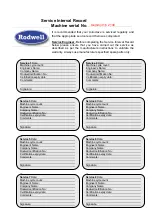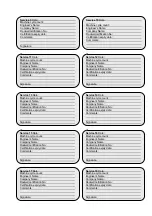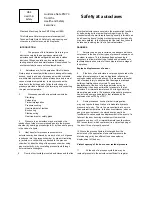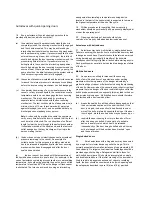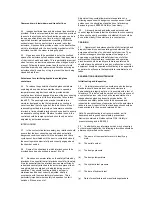
Periodic examination
34
All autoclaves should be examined at least once in
every 26 months by a person who is competent to assess
their suitability for continued safe use. If shorter intervals are
set under the relevant legislation, then those intervals should
be used. Examination of autoclaves should take account of
their mechanical strength, as influenced by, and the effects of,
wear, damage, corrosion, erosion etc. Special attention
should be paid to the correct functioning of all safety devices,
safety interlocks and fittings.
Routine maintenance
35
At regular intervals, determined by the conditions of
operation and the manufacturer's instructions, the whole
system should be checked by an experienced person
properly trained and competent to recognise defects. Checks
should follow written procedures which take account of the
manufacturer's instructions, any special factors relating to the
particular use of the autoclave, and frequency of operation.
Particular attention should be paid to the correct functioning of
all safety devices and interlocks, and it is recommended that
the experienced person checks these items at the beginning
of each shift when the autoclave is in use. Any faults or
defects which affect the safety of the vessel should be
promptly reported to an appointed superior who will ensure
that the autoclave is not used until the fault has been rectified.
Comprehensive records of examinations, tests, faults, repairs
and modifications should be maintained and entries should be
countersigned by a responsible member of management.
Manufacturers maintenance instructions should be strictly
adhered to.
LEGAL
36
The general requirements of the Health and Safety at
Work etc Act 1974 (HSW Act) apply to all autoclaves. These
require good design, construction and maintenance of the
plant together with provision of a safe system of work and
properly trained operators, maintenance staff and
supervision. The aim is to secure, so far as is reasonably
practicable the health and safety of employees,
self-employed persons and others who may be affected by a
work activity.
37
The Factories Act 1961 Section 30 may apply, see
HSE Guidance Note GS5 -
Entry into confined spaces.
38
The Pressure Systems and Transportable Gas
Container Regulations 1989 replace sections of the
Factories Act 1961 covering steam boilers, steam and air
receivers from 1 July 1990 with transitional provisions.
Requirements are laid down for the design, construction,
repair, installation, periodic examination in accordance with
a written scheme, operation, maintenance and keeping of
records. The Regulations apply across-the-board
provisions to all workplaces, with specific exceptions, and
are intended to prevent risk of injury from unintentional
releases of stored energy from pressure systems which
contain a 'relevant fluid' as defined in the Regulations.
Essentially 'relevant fluid' means gas and fluids under
pressure, including air and hot water kept above its boiling
point, at a pressure greater than 0.5 bar. In addition
'relevant fluid' covers steam at any pressure.
39
This Guidance Note gives advice which is
complementary to the Approved Codes of Practice and
Guidance which accompany the Regulations.
FURTHER INFORMATION
This Guidance Note is published by HMSO. Further advice
on this or any other publications produced by the Executive is
obtainable from HSE's Information Centres:
Health and Safety Executive
Library and Information Services
Broad Lane
SHEFFIELD S3 7HO
Tel: 0742 752392 Telex: 54556
Health and Safety Executive
Library and Information Services
St Hugh's House
Stanley Precinct
Trinity Road
BOOTLE
Merseyside L20 30Y
Tel: 051-9514381 Telex: 628235
Health and Safety Executive
Library and Information Services
Baynards House
1 Chepstow Place
Westbourne Grove
LONDON W2 4TF
Tel: 071-221 0416 Telex: 25683 or
from Area Offices of the HSE.
BIBLIOGRAPHY
BS 470:
Inspection, access and entry openings for
pressure vessels.
BS 1746:
Specification for domestic pressure cookers.
BS 2646:
Autoclaves for sterilization in laboratories.
BS 3970:
Autoclaves for sterilizing and disinfecting
medical products.
BS 5304:
Safety of machinery.
BS 5500:
Unfired fusion welded pressure vessels.
HSE Guidance Note GS4
Safety in pressure testing.
HMSO ISBN 0 11 883043 0
HSE Guidance Note GS5
Entry into confined spaces.
HMSO ISBN 0 11 883067 8

